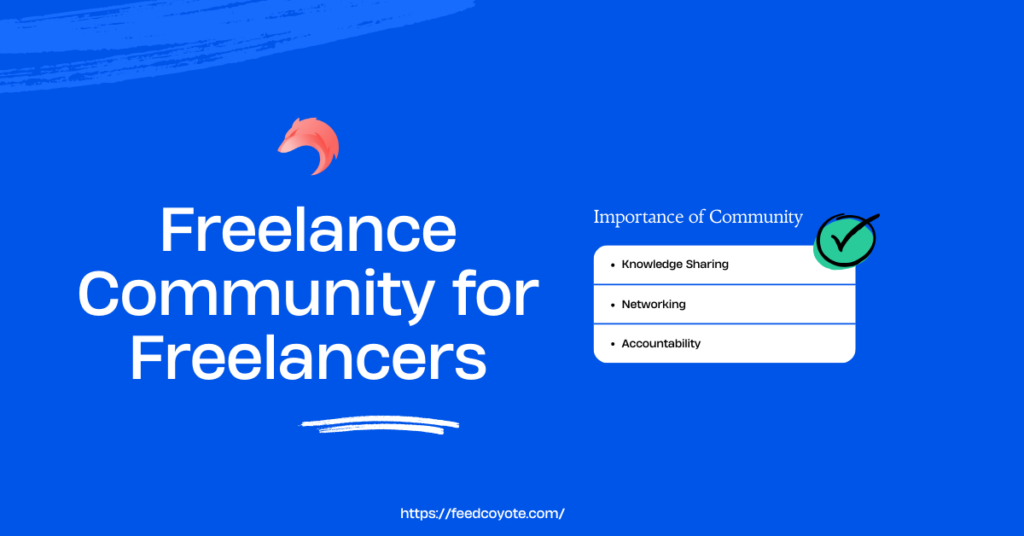In today’s digital age, the gig economy is thriving, and more people are turning to freelancing as a way to earn a living. Whether you’re a seasoned freelancer or just starting, one of the key ingredients to success in this competitive landscape is building a strong freelance portfolio. Your profile serves as your digital resume, showcasing your skills, experience, and personality to potential clients. In this article, we’ll guide you through the process of creating a compelling freelancer portfolio that will help you stand out in the crowd.
Building a strong freelancer profile is not just about listing your skills and experiences. It’s about presenting yourself as a professional, reliable, and trustworthy individual that clients can depend on. Let’s delve into the steps you need to take to create an exceptional freelancer profile.
Choosing the Right Freelance Platform
As a freelance professional, having a strong portfolio is essential for attracting clients and showcasing your work. One of the most important decisions you will need to make is choosing the right freelance platform to host your portfolio and show your professional experience
There are numerous freelance platforms available, each offering different features and benefits. Before making a decision, it’s important to consider your specific needs and goals as a freelancer. Here are some factors to consider when choosing a freelance platform:
1. Niche: Some freelance platforms cater to specific industries or types of projects, so choose a platform that aligns with your expertise and target clients.
2. Reputation: Look for platforms with a good reputation in the freelancing community, as this can help you attract high-quality clients.
3. Fees: Consider the fees charged by the platform, including any commission or membership costs. Make sure the platform’s pricing structure aligns with your budget and earning goals.
4. User Experience: Choose a platform that is user-friendly and easy to navigate, both for you as a freelancer and for potential clients browsing your profile.
5. Community Support: Look for platforms that offer support, resources, and networking opportunities for freelancers to help you grow your career.
Platforms like Feedcoyote offer various opportunities, so pick one that suits your niche.

Crafting a Captivating Profile Picture
In the world of freelance work, your online portfolio is essentially your resume. It’s the first impression potential clients will have of you and can make or break your chances of landing a job. One key element of a successful freelance portfolio is a captivating profile picture.
Your profile picture is the first thing that people will see when they visit your portfolio, so it’s important to make sure that it accurately represents you as a professional. Here are some tips for choosing the right profile picture:
1. Professionalism: Your profile picture should be professional and appropriate for the industry you work in. Avoid using casual or inappropriate photos that could turn off potential clients.
2. Visibility: Make sure your face is clearly visible in the photo, as this will help clients connect with you on a personal level.
3. Quality : Choose a high-quality image that is clear and well-lit. Blurry or pixelated photos can give off a negative impression.
4. Branding: Consider using your profile picture as an opportunity to showcase your personal branding. For example, if you’re a graphic designer, you could include elements of your design style in the photo.
5. Consistency: Use the same profile picture across all your online platforms and profiles to create a cohesive and professional brand image.
Your profile picture is the first thing clients see, so make sure it’s professional and friendly. A high-quality headshot with a warm smile can go a long way in creating a positive first impression.
Writing an Engaging Profile Bio
When it comes to creating a freelance portfolio, one of the most important elements is your profile bio. This is the first thing that potential clients will read when they visit your portfolio, so it’s essential that you make it engaging and memorable.
To start, think about what sets you apart from other freelancers in your field. What experience or skills do you have that make you unique? Highlight these in your profile bio to grab the attention of potential clients.
In addition, be sure to include relevant keywords related to your industry or services. This will help improve your visibility in search results on freelance platforms and attract clients looking for specific skills.
Keep your profile bio concise and to the point, focusing on the most important information about you and your work. Use a friendly and professional tone to make a good impression on clients.
Finally, don’t forget to include a call to action in your profile bio. Encourage potential clients to reach out to you for more information or to discuss their project needs. This can help drive engagement and lead to more job opportunities.
Overall, Your profile bio should be concise yet informative. Describe who you are, your expertise, and what sets you apart from others. Use a friendly and approachable tone to connect with potential clients.
Highlighting Your Skills and Expertise
When creating a freelance portfolio, it is essential to highlight your skills and expertise in order to attract potential clients and showcase your abilities. Here are some tips on how to effectively showcase your skills and expertise in your freelance portfolio:
1. Clearly define your niche: Start by clearly defining the specific area or niche in which you specialize. Whether it’s graphic design, copywriting, web development, or social media management, make sure to clearly communicate your expertise in that area.
2. Showcase your work: Include samples of your work in your portfolio to demonstrate your skills and capabilities. This could include past projects, client testimonials, case studies, or any other relevant examples of your work.
3. Highlight your achievements: If you have any notable accomplishments or awards in your field, be sure to highlight them in your portfolio. This can help build credibility and showcase your expertise to potential clients.
4. Include relevant certifications or training: If you have any relevant certifications or training in your field, make sure to include them in your portfolio. This can help demonstrate your commitment to professional development and showcase your expertise.
Effectively showcasing your skills and expertise in your freelance portfolio is essential for attracting potential clients and standing out in a competitive market. By clearly defining your niche, showcasing your work, highlighting achievements, including relevant certifications or training, and using client testimonials, you can create a compelling portfolio that highlights your unique abilities and attracts clients to your freelance business. Remember, your portfolio is often the first impression potential clients will have of you, so make sure it accurately represents your skills and expertise to stand out in the competitive freelance market.
Gathering Client Reviews and Testimonials
One of the most powerful tools in a freelance portfolio is client reviews and testimonials. These testimonials provide social proof of your skills and expertise, helping potential clients feel more confident in hiring you.
Gathering client reviews and testimonials may seem like a daunting task, but it is crucial for building credibility and trust with potential clients. Here are some tips on how to effectively gather client reviews and testimonials:
1. Ask for feedback: After completing a project, don’t be afraid to ask your clients for feedback. Most clients are happy to provide a testimonial if they were satisfied with your work. You can simply ask them to write a few sentences about their experience working with you.
2. Make it easy for clients to leave reviews: Provide clients with a link or form where they can easily leave a review or testimonial. This could be on your website, a review platform, or via email. The easier you make it for clients to leave a review, the more likely they are to do so.
3. Follow up with satisfied clients: If a client has expressed satisfaction with your work, follow up with them to see if they would be willing to provide a testimonial.
Positive client reviews and testimonials can significantly boost your profile’s appeal. Deliver outstanding work and politely request feedback from satisfied clients.
Setting Your Freelance Rates
Setting your freelance rates can be a challenging task, but it is an important step in establishing your worth as a freelancer. Here are some tips to help you determine the right rates for your services:
1. Research the market: Before setting your rates, it is important to research what other freelancers in your industry are charging for similar services. This will give you an idea of how much you should be charging to remain competitive.
2. Calculate your costs: Consider your overhead costs, such as software subscriptions, equipment, and any other expenses related to running your freelance business. Factor in these costs when determining your rates.
3. Determine your desired income: Think about how much you want to earn each month or year as a freelancer. This will help you set realistic rates that align with your financial goals.
Once you have gathered client reviews and testimonials, it’s time to set your freelance rates. This can be a challenging task, but it is crucial for establishing your worth as a freelancer. To determine the right rates for your services, start by researching the market. Look into what other freelancers in your industry are charging for similar services to get an idea of where you should price yourself to remain competitive.
Regularly Updating Your Profile
One of the most important aspects of maintaining a successful freelance portfolio is regularly updating your profile. This not only keeps potential clients engaged and informed about your latest work, but it also showcases your growth and progression as a freelancer.
By consistently updating your profile with new projects, testimonials, and skills, you demonstrate to clients that you are actively working and continuing to improve your craft. This can help build credibility and trust with potential clients, showing them that you are a reliable and experienced freelancer.
Additionally, updating your profile can help you stay relevant in a competitive market. By showcasing your most recent work and skills, you can attract new clients who are looking for someone with up-to-date expertise and experience.
To effectively update your freelance portfolio, consider the following tips:
1. Regularly add new projects: After completing a project, be sure to add it to your portfolio along with a brief description and any relevant client feedback. This not only showcases your work but also provides potential clients with examples of what you can do.
2. Update your skills and certifications: If you have gained new skills or certifications since your last update, be sure to add them to your profile. This shows clients that you are constantly improving and staying current in your industry.
3. Refresh your bio and profile picture: Make sure your bio accurately reflects your skills, experience, and personality. Update your profile picture to present a professional image to potential clients.
4. Share testimonials and reviews: If you have received positive feedback from clients, be sure to add these testimonials to your portfolio. This can help build credibility and trust with new clients.
Keep your profile fresh and up-to-date. Add new skills, certifications, and projects as you progress in your freelance career.
Networking and Building Connections
Networking and building connections are crucial aspects of establishing a successful freelance portfolio. In the competitive world of freelancing, having a strong network of contacts can open up numerous opportunities for collaborations, referrals, and new clients.
One effective way to start building connections is by attending networking events, industry conferences, and meetups. These events provide valuable opportunities to meet other professionals in your field, exchange ideas, and build relationships. Additionally, joining online freelancer communities and social media groups can help you connect with other freelancers and potential clients.
When networking, be sure to showcase your expertise and skills in a professional manner. This can help attract potential clients who are looking for someone with your specific talents. Be proactive in reaching out to potential collaborators or clients, and always follow up with a thank you message after making a connection .
Building strong relationships with clients is also essential for a successful freelance portfolio. By providing excellent customer service, delivering high-quality work, and maintaining clear communication throughout the project, you can build trust and loyalty with your clients. This can lead to repeat business, referrals, and positive reviews that will enhance your reputation as a freelancer.
In addition to networking and client relationships, consider collaborating with other freelancers on projects to expand your portfolio and showcase your ability to work well with others. Collaborations can also help you reach new audiences and gain exposure in different industries.
Overall, updating your freelance portfolio regularly, networking effectively, and building strong client relationships are key strategies for success as a freelancer. By staying proactive and constantly improving your skills and connections.
Managing Your Time and Projects
As a freelancer, managing your time and projects effectively is essential to maintaining a successful career. Juggling multiple clients and deadlines can be overwhelming, but with the right strategies in place, you can stay organized and on track.
One of the first steps in managing your time and projects as a freelancer is to create a detailed schedule. This should include all of your current projects, deadlines, meetings, and any other commitments you may have. By having a clear overview of your workload, you can prioritize tasks and allocate time efficiently to meet deadlines.
Utilizing project management tools can also help streamline your workflow and keep projects on track. Tools such as Trello, Asana, or Slack can help you stay organized, collaborate with clients or team members, and track progress on different projects.
Setting realistic goals and deadlines for each project is another important aspect of effective time management. By breaking down larger projects into smaller tasks and setting achievable deadlines, you can stay focused and on track to meet client expectations.
Dealing with Challenges and Rejections
One of the toughest parts of being a freelancer is dealing with challenges and rejections. Whether it’s a client not liking your work, facing technical difficulties, or struggling to find new clients, these obstacles can be demoralizing and frustrating.
It’s important to remember that rejection is a normal part of any creative field. Not every client will connect with your style or vision, and that’s okay.
When faced with challenges and rejections as a freelancer, it’s important to approach them with a positive mindset. Instead of dwelling on setbacks, use them as opportunities for growth and learning. Seek feedback from clients or peers to understand areas for improvement and make necessary adjustments to your work.
Another strategy for overcoming challenges is to stay organized and maintain a clear communication channel with clients. By setting expectations early on, addressing any issues promptly, and being transparent about your process, you can build trust and credibility with clients even in difficult situations.
Seeking support from other freelancers or joining online communities can also help you navigate challenges and rejections. Connecting with others who understand the freelance lifestyle can provide valuable insights, advice, and encouragement to help you overcome obstacles.
Freelancing comes with its share of challenges and rejections. Learn from setbacks and use them as opportunities for growth.
Staying Professional and Reliable
As a freelancer, one of the most important things you can do to ensure success is to stay professional and reliable. Your reputation as a freelancer is built on your ability to deliver high-quality work on time and within budget. Here are some tips for staying professional and reliable in your freelance portfolio:
1. Communication is key: Make sure to communicate regularly with your clients throughout the project. Keep them updated on any progress, setbacks, or changes in the timeline. Be responsive to emails, messages, and calls to show that you are committed to the project.
2. Meet deadlines: Always strive to meet or exceed deadlines set by your clients. If you anticipate any delays, communicate this as soon as possible and work with the client to find a solution. Consistently meeting deadlines shows your professionalism and reliability .
3. Deliver high-quality work: Take pride in your work and make sure to deliver high-quality results that meet or exceed client expectations. Pay attention to detail, adhere to project guidelines, and ask for feedback to ensure client satisfaction.
4. Be transparent: Be honest and transparent with your clients about your process, pricing, and any potential challenges that may arise during the project. Building trust through transparency can help foster strong relationships with clients and lead to repeat business.
5. Handle feedback gracefully: Not every client will be completely satisfied with your work, and that’s okay. Take feedback constructively and use it as an opportunity to improve your skills. Respond to feedback professionally and make necessary adjustments to deliver a final product that meets the client’s needs.
Conclusion
A strong freelancer profile is your ticket to success in the competitive freelance market. By carefully curating your profile, showcasing your skills, and building a stellar reputation, you’ll attract clients and opportunities that align with your career goals. Feel free to Join Feedcoyote, a freelance platform created for freelancers like you to collaborate and earn more money
Frequently Asked Questions
How long does it take to build a strong freelancer profile?
Building a strong profile can take time. It’s an ongoing process that requires regular updates and improvements.
Should I include all my skills in my profile, even if they’re unrelated to my niche?
Focus on skills relevant to your niche to avoid overwhelming potential clients with irrelevant information.
Is it necessary to have a professional headshot as my profile picture?
While not mandatory, a professional headshot can significantly enhance your profile’s appeal.
How can I handle negative client reviews?
Address negative reviews professionally, learn from them, and strive to improve your services.
Can I change my freelance platform after creating a profile?
Yes, you can switch platforms if you find one that better suits your needs. Be sure to update your profile accordingly.





